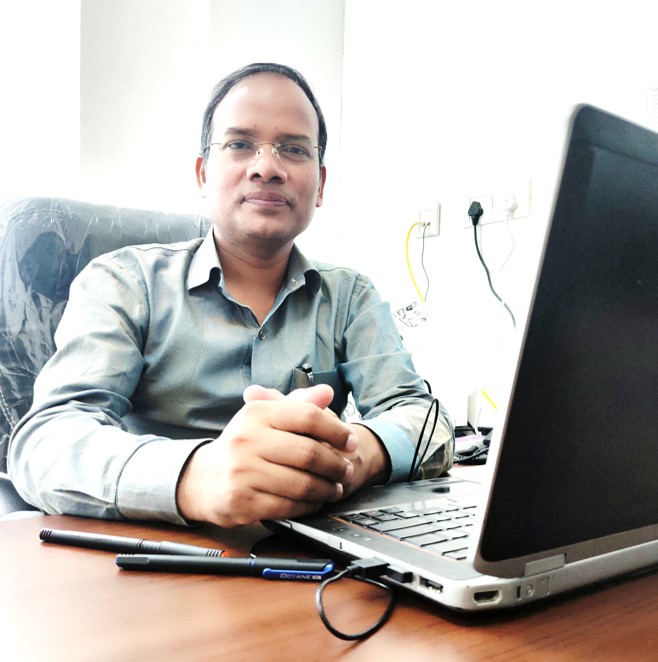Profile
Dr. Vinod Kumar is an interdisciplinary researcher with a diverse research background. Dr. Kumar received his Doctorate degree (2014) from the Banaras Hindu University, Varanasi, India, in the engineering of advanced carbon nanostructures for various biomedical applications. Thereafter, he underwent for his first postdoctoral training (2014-2016) from the Institute of Nano Science & Technology and developed an expertise in Nano-bio-analytical systems/devices for an early stage screening of cardiac disease biomarkers. Subsequently, he moved to the Ben-Gurion University of the Negev, Israel, where continued expanding his skills in advanced analytical domains i.e. Nanopores, cellular models etc. During his tenure at Ben-Gurion University of the Negev (2016-2019), he got training in the fabrication and bio-functionalization of nanopore towards improved analytical outcomes for small molecules, and for error-free nucleic acid/ peptide sequencing and also in developing 3-D cellular models. Following his return to India , as a senior researcher at the SGPGIMS, Lucknow, he began investigating the role of nanomaterials in stem cell engineering, with the goal to develop a pancreatic organoid (as a model system) for understanding the pathophysiology of various environmental diabetogens in Type 2 diabetes, while also designing biopolymer-based edible scaffolds for the development of alternative protein source.
Current Focus Areas
Development and characterization of organoids as an advanced in vitro 3-D disease model system
Nano-biomaterials based strategies to engineer the niche and cell surface for efficient growth of organoid model
Organoids-on-a-chip/ 3-D bioprinting
Nanopore and nanomaterials based novel platforms/devices for disease diagnosis
Smart proteins
Nanomaterials and MSC based tissue frame work for regenerative therapy
Selected Publications
Singh, S.S., Singh, A., Kumar, V., et al.,(2022) Nanosheets Based Approach to Elevate the Proliferative and Differentiation Efficacy of Human Wharton’s Jelly Mesenchymal Stem Cells, Int. J. Mol. Sci. , 23, 5816 (IF=6.0)
Glionna, C., Kumar, V.,* Le Saux, G., Pramanik, B., Wagner, N., Cohen, R. L., Ashkenasy, G., Ashenasy, N., (2021) Dynamic Surface Layer Coiled Coil Proteins Processing Analog-to-Digital Information Journal of the American Chemical Society, 2021,143, 42, 17441–17451 (IF= 16.32) [* Equal contributor]
Kumar, V., Jack R. Brent, J. R., Shorie, S., Kaur, H., Chadha, G., Thomas, A. G., Lewis, E. A., et al.(2016)A Nanostructured Aptamer-Functionalised Black Phosphorus Sensing Platform for Label-Free Detection of Myoglobin, a Cardiovascular Disease Biomarker, ACS Appl. Mater. Interfaces 2016, 8, 22860−22868 (IF=10.38).
Kumar, V., Shorie M., Sabherawal, P., Ganguli, A.,(2015) Graphene-CNT nanohybrid aptasensor for label free detection of cardiac biomarker myoglobin,Biosensor & Bioelectronics 2015, 72, 56-60 (IF=12.54).
Paital, B., Guru, B., Mohapatra, P., Panda, B., Parida, N., Rath, S., Kumar, V*., Saxena, P.S., Srivastava, A (2019),Ecotoxic impact assessment of Graphene Oxide on lipid peroxidation at mitochondrial level and redox modulation in fresh water fish Anabas testudineus,Chemosphere 2019, 224, 796-804 (IF=8.94) [* Equal contributor]
